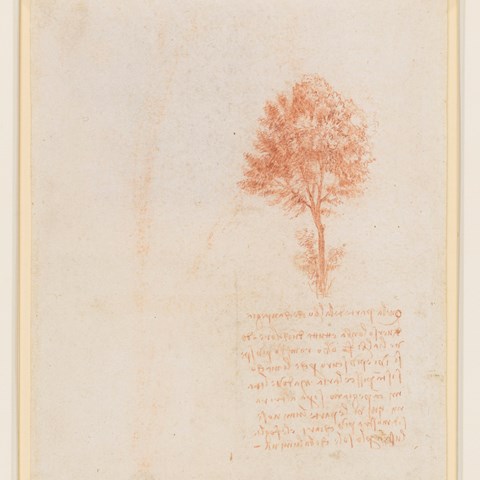Contact
Department of Forest Resource Management, Division of Forest Remote Sensing

A new model to calculate carbon uptake by trees illustrates why large trees may be more susceptible to drought. Previous models where based on Leonardo da Vincis rule of trees. Scientists from SLU and Bangor University have shown that the model isn’t correct when applied to the internal vascular structures of trees.
A ‘Rule of Trees’ developed by Leonardo da Vinci to describe how to draw trees has been largely adopted by science when modelling trees and how they function.
Now, scientists at the Swedish University of Agricultural Sciences (SLU) and Bangor University in the UK have discovered that this rule contradicts those that regulate the internal structures of trees.
Da Vinci’s interest in drawing led him to look at size ratios of different objects, including trees, so that he could create more accurate representations of them. To correctly represent trees, he perceived a so-called ‘Rule of trees’ which states that "all the branches of a tree at every stage of its height are equal in thickness to the trunk when put together."
It had been thought that Leonardo’s ‘Rule of Trees’ could also be applied to the vascular channels which transport water through a tree, with the individual channel sizes decreasing at the same ratio, as branches become narrower, while still adding up to the trunk’s volume. This ‘rule’ had been accepted as part of metabolic scaling theory.
But scientists from Bangor University and SLU publishing in the prestigious peer-reviewed journal PNAS (18 September 2023, www.pnas.org/doi/10.1073/pnas.2215047120), have shown that this model isn’t exactly correct when applied to the internal vascular structures of trees.
For water and nutrients to move efficiently through the tree, from root to leaf-tip, the vascular system has to maintain ‘hydraulic resistance’.
Ruben Valbuena of SLU and Stuart Sopp of Bangor University have calculated that for hydraulic resistance to work, there comes a point where the ‘Rule of Trees’ can no longer hold true.
In order to efficiently transport liquids from roots to leaf-tips, a tree’s vascular channels need to maintain a certain dimension to maintain hydraulic resistance. Therefore, the plant has to reduce in its volume as it reaches its extremities, causing a higher ratio of capillary to the surrounding plant mass.
As Ruben Valbuena (Professor at SLU and Honorary Professor at Bangor University) explains,
“While a great ‘tip’ for artists, which is what Da Vinci intended, Leonardo’s Rule of trees does not hold up at the micro level”.
“We believe our calculations further refine metabolic scaling theory and improve understanding the plant system as a whole. Our re-calculations may also explain why large trees are more susceptible to drought, and may also be at a greater vulnerability to climate change.”
Co-author Stuart Sopp, currently studying for his PhD in Environmental Science at Bangor University said:
“One of our aims was to produce a ratio which could be used to estimate tree biomass and carbon in forests. This new ratio will assist in calculating global carbon capture by trees.”